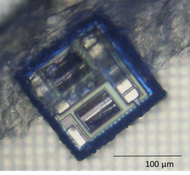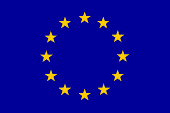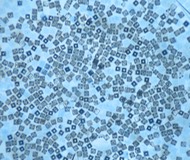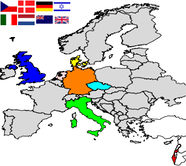DNAzyme wires
The electrically triggered, metal-ion-stimulated, synthesis of polymeric DNAzyme wires was demonstrated, Figure 1. This is a further step in the enhancement of the repertoire of programmable sensors for lablets and other microscopic structures with the requisite specificity and sensitivity through autocatalytic processes.
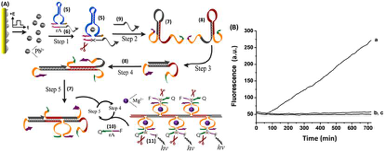
Figure 1 (A) The electrochemically triggered activation of a catalytic cascade that synthesizes DNAzyme nanowires through the primary release of Pb2+ ions and the subsequent hybridization chain reaction. (B) Time-dependent fluorescence measurements, at λem= 590 nm, corresponding to: (a) The electrochemical release of Pb2+ ions from a Pb-deposited Au surface upon the application of a potential pulse at E = +0.2 V vs. Ag QRE for 3 sec, (b) Time-dependent fluorescence response of the system in the absence of an applied potential pulse releasing Pb2+ ions, or (c) Upon the application of the potential pulse, but in the absence of the substrate sequence (6). All systems included HEPES buffer (0.1M, pH=7.0) containing NaCl, 50 mM, and the DNAs (5), 0.2 µM, (6), 0.05 µM, (7), 3 µM, (8), 3 µM, and (10) 0.75 µM.
Stimuli-responsive hydrogel interfaces
A general methodology for the assembly of stimuli-responsive hydrogel interfaces was developed. The method is based on the assembly of promoter nucleic acid strand on the surface in a monolayer configuration. In the presence of the acrylamide chains PA and PB modified with hairpins HA and HB the hybridization chain reaction (HCR) was initiated, leading to the assembly of a hydrogel on the surface. By incorporation of additional stimuli-responsive nucleic acid tethers into the polymer chains, such as i-motif, G-quadruplexes, switchable, stimuli-responsive hydrogels were assembled on the surfaces. The major highlights of this study include:
− The thickness of the hydrogel films was controlled by the time-interval of the HCR process.
− In the presence of appropriate triggers, K+/crown ether or pH, stimuli-responsive hydrogels exhibiting switchable stiffness properties were generated. The switchable stiffness properties were monitored by micro-indentation experiments probing the Young moduli of the hydrogel in the different stiffness hydrogel.
− By the incorporation of hemin into the G-quadruplex/crown ether stimuli-responsive hydrogel films, switchable electrocatalytic interfaces toward the electrocatalyzed reduction of H2O2 were produced.
− By the implementation of o-nitrobenzyl photoprotected nucleic acids as promoters, photolithographic uncaging of the promoter units enabled the surface patterning of the hydrogel films.
The results within this activity have important implications on developing hydrogel surfaces of controlled stiffness and biocompatibility, design of sensors and the development of surfaces for directional cell growth
Stimuli-responsive and shape-memory hydrogels
A method to assemble pH-responsive hydrogels by crosslinking acrylamide chains with nucleic acids that respond to pH changes was developed. Hydrogel matrices crosslinked by duplex bridging units at pH = 7.0 that are re-configured at pH = 5.0 to C-G.C+ triplex units that lead to the dissolution of the hydrogel were prepared. Similarly, hydrogels that are bridged at pH = 7.0 by triplex T-A.T units that are dissociated at pH = 10.0, resulting in the dissociation of the hydrogel matrices to liquid state, were prepared. The reversible pH-stimulated reversible hydrogel-to-solution states of the different systems were characterized by rheology. Effects of loading of the bridging units and intercalators on the stiffness of the hydrogels were characterised.
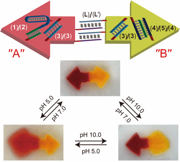
Fig. 2 Shape-memory hydrogel matrices composed of hydrogels crosslinked by duplex/C-G.C+ responsive bridges or by duplex/T-A.T responsive duplexes were synthesized. By combining the two types of hydrogels, hybrid structures containing C-G.C+ and T-A.T responsive domains were fabricated. The programmed pH-stimulated shape-memory function of the composite hydrogels was demonstrated.

